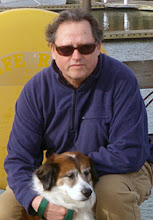All fragrances are created and do not have mysterious origins. No matter what marketers want you to think fairy pheromones are not scraped off the wings of a butterfly into a perfume bottle and a rainbow's essence has never been successfully evaporated into a magic decanter of dishwashing detergent. Fragrances for cleaning products are simply chemical compounds added to a product base that ultimately are flushed down the drain and into our water supply. This means that these compounds have come under more and more scrutiny by governing agencies leaving suppliers to justify safe toxicity in the environment.
Many Fragrance Houses argue that creativity will be compromised due to the upcoming EPA's DfE criteria and the resultant non-acceptable lists. They also state a lack of known material substitutions for the Perfumer's palette will result in an inferior product. With the new DfE module finalized this Spring and the conference on how to develop responsible sustainable formulas this June, the Green Nose would like to contribute to the dialog by providing a demonstration fragrance compound developed from ingredients that complied to 2008 DfE criteria, as follows:
Fresh Herbal Floral GPF-0411
[Fresh Notes]
parts Name and CAS#
01.3 aldehyde c-10 112-31-2
00.5 aldehyde c-12 lauric 112-54-9
00.5 aldehyde c-12 mna 110-41-8
01.5 citronellyl nitrile 51566-62-2
11.2 dihydro myrecenol 18479-58-8
02.0 ethylene brassylate 105-95-3
20.0 tetrahydro linalool 76-69-3
[Herbal Notes]
02.5 amyl salicylate 2050-08-0
01.0 camphor powder 76-22-2
01.0 dimetol 13254-34-7
00.2 estragole 140-67-0
00.3 ethyl amyl ketone 106-68-3
01.0 eucalyptol 470-82-6
04.0 iso bornyl acetate 125-12-2
09.0 terpinyl acetate 80-26-2
[Floral Notes]
02.5 benzyl salicylate 118-58-1
02.0 cyclacet 5413-60-5
02.0 dimethyl octanol 151-19-9
10.0 hedione 24851-98-7
05.0 koavone 81786-73-4
10.0 lilial 80-54-6
03.5 linalyl acetate 115-95-7
01.0 methyl napthyl ketone 941-98-0
04.0 terpineol alpha 98-55-5
[Green Notes]
00.5 cis-3-hexenol 928-96-1
00.5 cis-3-hexenyl acetate 3681-71-8
00.5 liffarome 67633-96-9
01.0 triplal 68039-49-6
00.5 undecavertol 81782-77-6
01.0 viridine 101-48-4
------
100.0
When formulating fragrances for a cleaner intended for DfE approval, Perfumers must depend on what they know thus the importance of the new module and the agreements that should be forged at the June conference. This will facilitate the cleaning product manufacturers to require environmental safe cleaners.
There is an apparent need based from recent trade reports to mention the difference of creating a safe fragrance for skin products like perfume or lotions. For these assignments, the Perfumers enjoy a power of mystique, naivete and experimentation. The Perfumers have access to thousands of materials that help the artistry of the craft. An entirely different set of toxicity reviews and risk assessments guide the safety of those products prior and after consumer market introduction.
My faith and personal experience in the fragrance industry based on past actions, is they will embrace and promote the new environmental interpretive skills to their suppliers and their clients in the future. The time for prevention is now and responsible sustainability is the answer.





